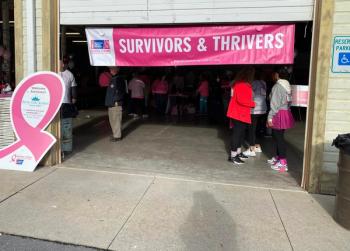
Winning over women by addressing healthcare gaps through better innovations | Andrea Kelly
There’s a lot of mythology and ignorance around what women want in the healthcare marketplace. Finding the truth means looking deeper, and more critically, into unmet needs.
In the first three-quarters of 2021, U.S. digital startups serving women raised a record $1.2 billion – nearly doubling all 2020 funding for that same category, according to a
But while those figures sound impressive, women+ funding – which Rock Health researchers define as the health needs experienced by cisgender women, and/or relate to transgender women or nonbinary individuals – accounts for just 7% of all digital heath funding through August 2021, when investment data was tallied.
Additionally, parenthood solutions dominate the focus of women-focused health startups. Reading through lists of top womens+ health startups highlights the focus on things like family-planning and pre-post partum care.
While these are important issues of our time, we know that women+ health is more than reproductive organ health. Fewer
Women account for 50% of the population and control 80% of healthcare dollars, so entrepreneurs and their investment backers could probably be doing — and spending — more. There is a huge opportunity for innovators to narrow the gender healthcare gap and roll out technology and solutions to put women+ unique health needs first, as the default and not the exception.
Changing times, parallel trends
So, what do women, including trans/nonbinary individuals, want and need in the healthcare space that could address their unique challenges?
There are surely lots of ideas, but few innovations truly hit the mark, perhaps because we’re focusing on old stories rather than data.
Consider some of the recent trends highlighted by the 2020 Kaiser Family Foundation (KFF)
- 38% of women skipped preventive health services at the height of the pandemic in 2020, such as a yearly check-up or routine test, compared with 26% of men
- 28% skipped a recommended medical test or treatment, compared with 15% of men
These statistics shocked me at first. Conventional wisdom states that men are more reluctant to go to the doctor and therefore less likely to seek preventive care. But that’s not the whole story. The survey goes on to highlight the pandemic’s role in exacerbating inequalities that have lingered for generations:
- 30% of women quit their job because of the closure of a child’s school/daycare, compared with 3% of men;
- 46% of women said they took unpaid sick leave when their child’s school/daycare closed compared with 31% of men;
- 51% of women said stress related to the coronavirus affected their mental health, compared with 34% of men.
All these data suggest that more women are feeling overwhelmed, time-strapped and stressed.
There’s a price to be paid when health is sidelined. Chronic diseases are the leading cause of death and disability in the United States and impact an
Targeting women’s real-life needs in 2022
We can change this dynamic by investing in, developing and bringing to market more products and services that address women’s healthcare needs as well as their emotional needs.
One of the most important considerations is convenience.
Women are busier than ever and while the work-at-home revolution sped up by the pandemic has eased some burdens, it has exacerbated others. The need for convenience continues to grow. Also, thanks to advances in technology that have fed into a global culture of consumerism, expectations have leveled up: Women want healthcare and services that are as convenient as mobile banking and food delivery apps.
So, why not invest more in solutions that bring preventive care right to their door?
Home-based health testing kits, for example, are easy to use and can walk individuals through the self-screening process for cholesterol, blood-glucose levels and other biometric data such as high body mass index (BMI).
Given the recent
If health innovators can take some of the exhaustion and health-related to-do’s off their plate, by bringing better solutions to the marketplace by way of development, investment and rollout, women and all the stakeholders in their lives – children, partners, colleagues – stand to benefit big.
Andrea Kelly is senior product manager at Reperio Health.



























































































